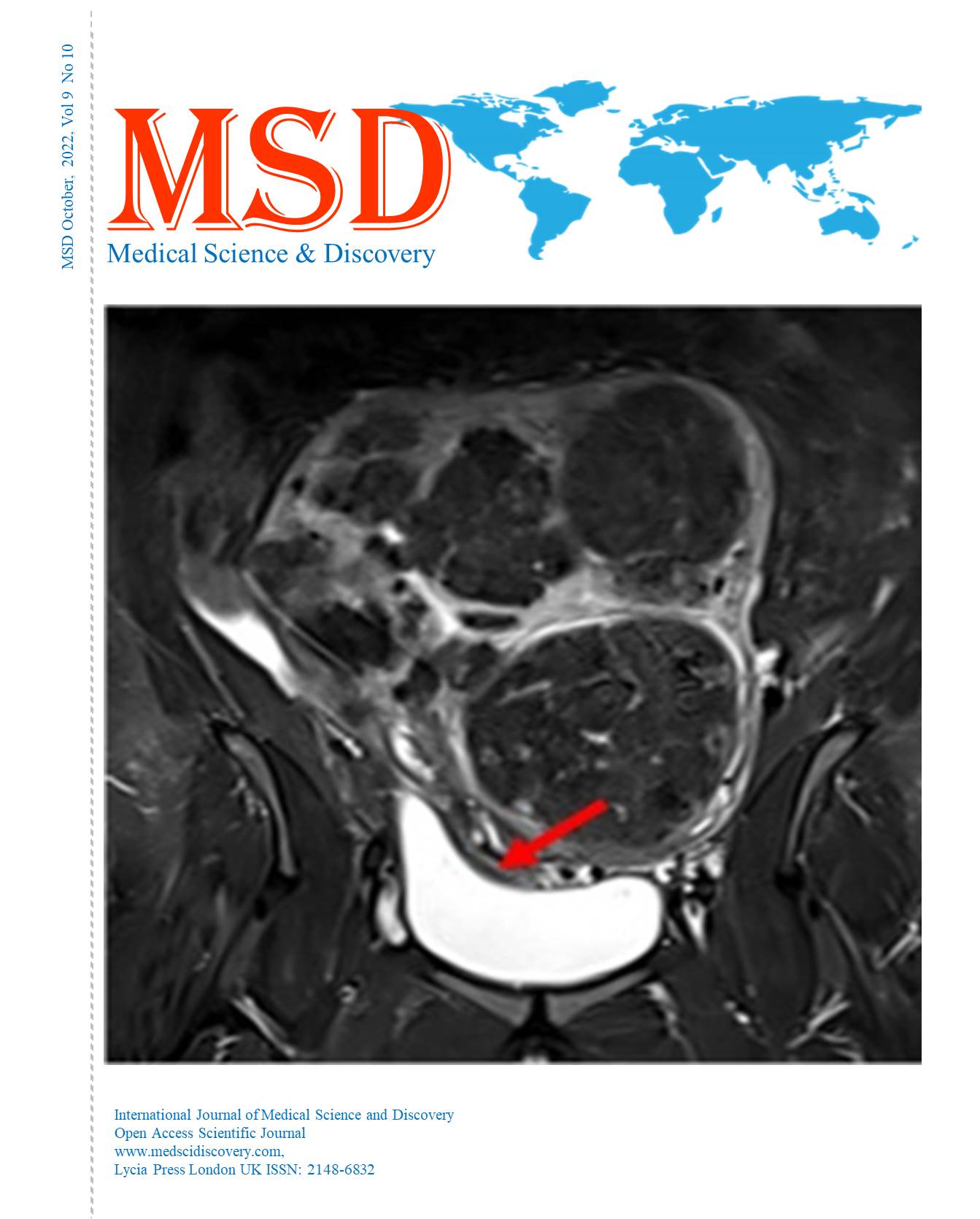Administration of the Cook Cervical Ripening Balloon to Stop Cervical Bleeding in a Patient with Placenta Previa: A Case Report Cook Cervical Ripening Balloon to Cease Cervical Canal Bleeding
Main Article Content
Abstract
Objective: Placental implants in the cervical canal may occur result in patients with placenta previa that lead to bleeding after placental removal. Bleeding from the cervical canal can be stopped by inserting the Cook Ripening Balloon.
Case Presentation: A 31-week pregnant an was brought to the emergency clinic with a complaint of vaginal bleeding, and active vaginal bleeding was observed. Ultrasonography showed a fetus with fetal bradycardia and placenta previa. The patient underwent emergency Caesarean delivery. The placenta was easily removed without any complications. Bleeding from the cervical canal was observed by vaginal examination. The Cook Cervical Ripening Balloon was inserted into the cervical canal, and the bleeding stopped. The patient was discharged healthy.
Conclusion: Bleeding from the uterine cervix can be stopped by insertion of the Cook Cervical Ripening Balloon.
Downloads
Article Details

This work is licensed under a Creative Commons Attribution-NonCommercial 4.0 International License.
Accepted 2022-10-27
Published 2022-10-27
References
Ogoyama M, Takahashi H, Baba Y, Yamamoto H, Horie K, Nagayama S, et al., Bleeding-related outcomes of low-risk total placenta previa are equivalent to those of partial/marginal placenta previa. Taiwan J Obstet Gynecol. 2022;61(3):447-452. doi: 10.1016/j.tjog.2022.03.007. DOI: https://doi.org/10.1016/j.tjog.2022.03.007
Zheng X, Li T, Zeng M, Cheng X, Rao H. The clinical value of prenatal assessment of cervical length and placental thickness in pregnant women with placenta previa. Am J Transl Res. 2021;13(5):5308-5314.
Dang X, Xiong G, Fan C, He Y, Sun G, Wang S, et al., Systematic external evaluation of four preoperative risk prediction models for severe postpartum hemorrhage in patients with placenta previa: A multicenter retrospective study. J Gynecol Obstet Hum Reprod. 2022;51(4):102333. doi: 10.1016/j.jogoh.2022.102333. DOI: https://doi.org/10.1016/j.jogoh.2022.102333
Wasim T, Bushra N, Riaz S, Iqbal HI. Fetomaternal outcome in patients with placenta previa. Pak J Med Sci. 2020;36:952–7. Doi: 10.12669/pjms.36.5.1647. DOI: https://doi.org/10.12669/pjms.36.5.1647
Deleu F, Deneux-Tharaux C, Chiesa-Dubruille C, Seco A, Bonnet MP. EPIMOMS study group. A population-based analysis of French transfusion practices for women experiencing severe postpartum hemorrhage. Int J Obstet Anesth. 2020;42:11–9. doi: 10.1016/j.ijoa.2019.07.006 DOI: https://doi.org/10.1016/j.ijoa.2019.07.006
Gu Y, Zhou Y, Li L, Li H, Wang S, Wang Y, Zuo C. Cook Cervical Ripening Balloon for placenta accreta spectrum disorders with placenta previa: a novel approach to uterus preserving. Arch Gynecol Obstet. 2022 Mar 15. doi: 10.1007/s00404-022-06476-6. Epub ahead of print. DOI: https://doi.org/10.1007/s00404-022-06476-6
Wu C, Li Y, Ye W, Ma W, Zhao D. Cook Cervical Ripening Balloon successfully prevents excessive hemorrhage combined with ultrasound-guided suction curettage in the treatment of cesarean scar pregnancy. J Obstet Gynaecol Res. 2017;43(6):1043-1047. doi: 10.1111/jog.13318 DOI: https://doi.org/10.1111/jog.13318
Soyama H, Miyamoto M, Ishibashi H, Nakatsuka M, Kawauchi H, Sakamoto T, et al. Analysis of prophylactic Bakri balloon tamponade failure in patients with placenta previa. Taiwan J Obstet Gynecol. 2019;58(1):159-163. doi: 10.1016/j.tjog.2018.11.029. DOI: https://doi.org/10.1016/j.tjog.2018.11.029
Park HS, Cho HS. Management of massive hemorrhage in pregnant women with placenta previa. Anesth Pain Med (Seoul). 2020;15(4):409-416. doi: 10.17085/apm.20076. DOI: https://doi.org/10.17085/apm.20076
Young AMP, Uribe K, Shaddeau AK. Protrusion of placental tissue through the cervical os as an unusual presentation of placenta accreta: A case report. Case Rep Womens Health. 2021 Jun 10;31:e00334. doi: 10.1016/j.crwh.2021.e00334. DOI: https://doi.org/10.1016/j.crwh.2021.e00334

